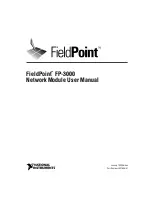
Chapter 5 Clustering Switches
Planning a Switch Cluster
5-4
Catalyst 2900 Series XL and Catalyst 3500 Series XL Software Configuration Guide
78-6511-05
Planning a Switch Cluster
Anticipating conflicts and compatibility issues is a high priority when you
manage several switches through a cluster. This section describes the following
considerations, requirements, and caveats that you should understand before you
create the cluster.
Refer to the release notes for software compatibility considerations and
requirements on cluster-capable switches.
Automatic Discovery of Cluster Candidates
The switch uses Cisco Discovery Protocol (CDP) to discover and display
candidate switches that can be added to a cluster. By using CDP, a switch can
automatically discover switches in star or cascaded topologies that are up to three
cluster-enabled devices away from the edge of the cluster. You can configure the
command switch to discover switches up to seven cluster-enabled devices away.
The default is three hops. To set the number of hops the command switch searches
for candidate and member switches, or to disable the automatic display of
suggested candidates, select Cluster > User Settings.
Note
Do not disable CDP. CDP must be enabled for the switch to discover and
display the switch cluster and connected switch clusters, cluster candidates,
and neighboring edge devices.
When an edge device that does not support CDP is connected to the command
switch, CDP can still discover the candidate switches that are attached to it. When
a switch that does support CDP but does not support clustering is connected to the
command switch, the cluster is unable to discover candidates that are attached to
that switch. For example, Cluster Builder cannot create a cluster that includes
candidates that are connected to a Catalyst 5000 series or Catalyst 6000 switch
connected to the command switch. For more information about CDP, see the
“Configuring CDP” section on page 6-22
.
















































